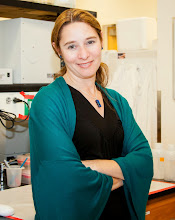 |
| From http://www.bboyscience.com/mental-health-strength/ |
In my quest for eternal youth (or at least slower signs of
aging!) I’ve started weight training.
All of those bicep curls and shoulder presses are starting to pay off –
I can actually see muscles in my upper body.
Just as we perform exercises to help our bodies look and
perform their best, we can (and should!) perform exercises to improve our
speaking skills. I developed a quick set of speaking exercises to work on
specific aspects of public speaking: voice volume, eye contact, body language,
and removing filler words. These
exercises work well in groups of 5-10 people but can be modified for different
sized groups or situations.
I run this series in 4 rounds, where each round focuses on
one skill while building on the previous rounds. Participants stand in a circle and one person starts by
speaking a few sentences, paying specific attention to projecting their voice
to the other members of the group.
Then the person to their right does the same thing, and so on, until each
group member has a chance to speak while concentrating on voice volume and
vocal control. The second round is
much the same, but participants strive to make eye contact with each group
member. In the third round, the
focus is on good posture and a confident stance – feet hip-width apart, hands
relaxed at sides. Finally, in the
fourth round, participants attempt to eliminate filler words (ahs, ums, likes,
you knows) from their speaking. The idea is that in each round, we focus on the
current skill (like body language) but also practice skills from the round
before, such as eye contact.
I assigned a different topic for each round, such as
“describe your holiday plans”, or “what would you do if you won the lottery?” Participants
practiced thinking on their feet as well as on specific delivery skills. These
exercises can be easily modified for different skills (vocal variety, hand
gestures) and using topics appropriate for the audience.
I tried this exercise today in a speaking workshop for
biology majors at Washington State
University Vancouver and I was
happy with the outcome. I
recommend assigning one member of each group to be the “reminder” in order to
gently cue people to the task at hand.
For example, if the focus is body language and the person speaking is fidgeting
with their hands, the reminder would say “body language” to make the speaker
aware of the fidgeting behavior. Try
rotating reminders each round so no one is always the bad guy.
You would probably train for a marathon, so how about
training for your next presentation.
Try these exercises with your friends or coworkers. Enjoy your workout!

No comments:
Post a Comment